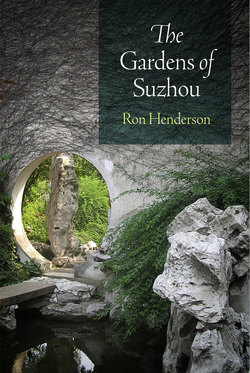Читать книгу The Gardens of Suzhou - Ron Henderson - Страница 8
На сайте Литреса книга снята с продажи.
ОглавлениеPREFACE
A friend once remarked that I was fortunate that I cannot read the Chinese language (apart from a few characters) when I visit the gardens of Suzhou. He said when he walks through the gardens, the pre-ponderance of text continually tells him what he is supposed to see and experience. He envied my ability to walk through the spaces and understand them only for their proportion, material qualities, and spatial sequences because I could not understand the written inscriptions.
In this spirit, I have not included the name of every pavilion or scenic spot in the gardens. That information is available in more extensive texts in English, but it is cumbersome and distracting to read all the names and scenes in the garden and there is not space here to do justice to their derivation and scholarly allusions. Therefore, I mention the names of structures and scenes selectively.
Perhaps this is also my own way to shift the scholarship of these gardens away from their well-documented literary associations and symbolism toward an understanding based on their visual proportions, physical presence, spatial qualities, experiential sequences—and even their urban ecology—in an effort to extend their influence to the contemporary discourse on gardens and landscapes.
The gardens and their street addresses are listed with their names written in Chinese characters, with their Hanyu-Pinyin spelling, and with an English translation. Fees for entrance into the gardens vary among sites and are subject to change so they have not been listed in this guide.
Translations are complicated by the nuanced meaning often embedded in the names of gardens, pavilions, and places in the gardens; I have provided the most commonly used names. For instance, the Zhuozheng Yuan, the Humble Administrator’s Garden, may also be translated as the Garden of the Unsuccessful Politician.
All Chinese names are written in the traditional manner with the family name first.
Dates in Imperial China are designated by the year of reign of the emperor (e.g., twelfth year of the Emperor Qianlong). For convenience, dates are also provided in B.C.E. and C.E. years.
The garden plans are based upon the authoritative plans in Liu Dunzhen, Chinese Classical Gardens of Suzhou. My research assistants at Roger Williams University, Rhode Island School of Design, Tsinghua University, and The Pennsylvania State University drew the plans of the gardens, provided translations, and contributed in many ways: Frank Wierschalak, David Giuliano, Ryan Duval, Peter Bartash, Vivien Sin, Wu Kun, Elizabeth Hindman-Harvey, Demetrios Staurinos, Zhang Jingni, Xu Xiaoqing, Hsu Tingyun, Li Qiwen, Xu Shaonan Yang Xi, Mo Shan, Ni Xiaoyi, Zhao Qian, Zach Jones, and Lacey Goldberg.
All photographs are by the author except where noted.
